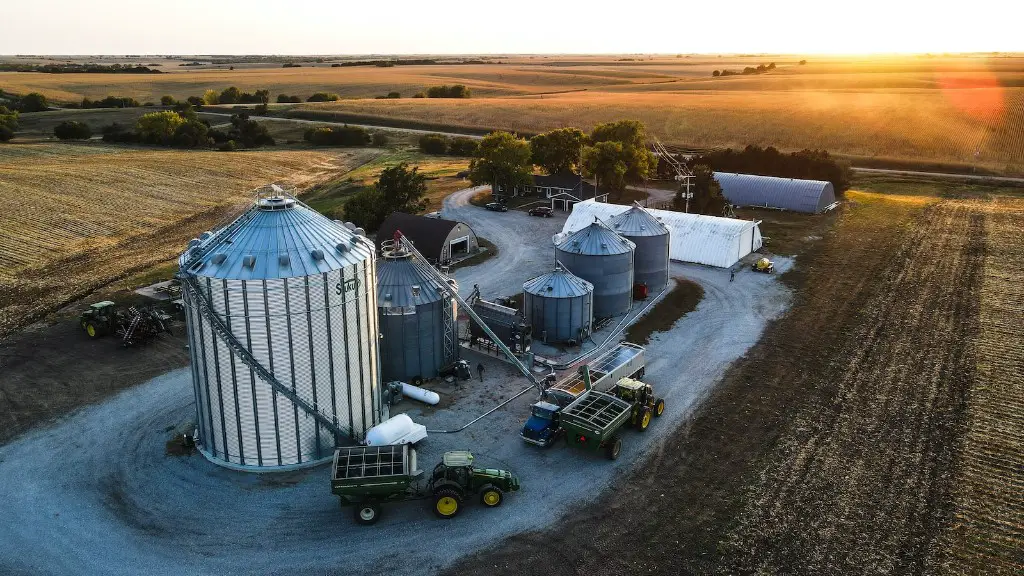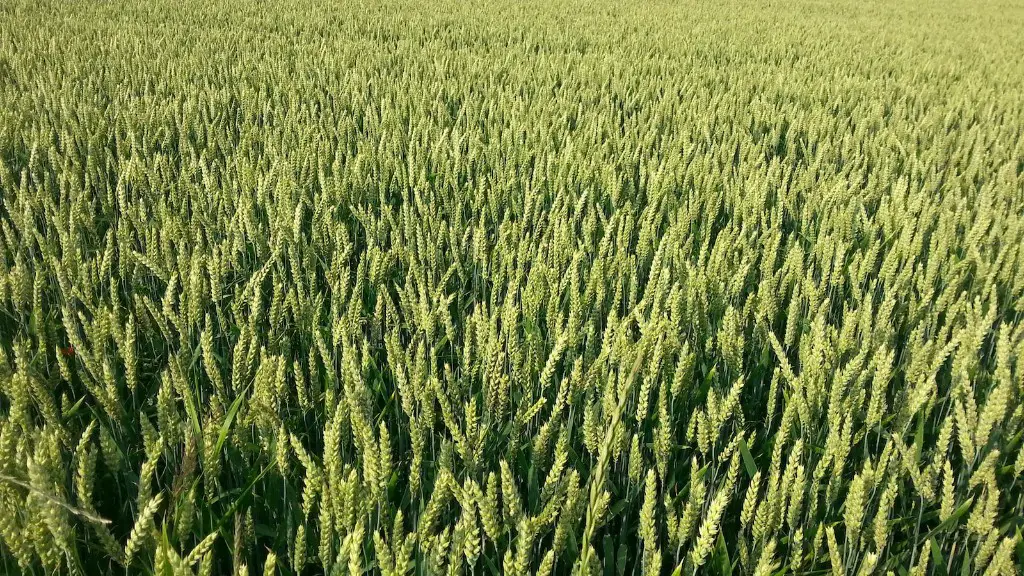Soil structure is an important aspect of agricultural production system. It refers to the arrangement of microscopic soil particles, water and air in the soil, which creates a cohesive and beneficial environment for plant growth. To summarize, soil structure affects the formation of air and water channels, nutrient balance and colonization by beneficial organisms. Good soil structure is the key to healthy, productive soils, and is an important component of sustainable agriculture.
Soil structure can be improved by physical, chemical and biological means, depending on the project and the resources available. Physical techniques for improving soil structure include tilling and planting crop rotations, which disturb the soil, break up soil clods, enhance pore space and create favorable aggregate structures. Chemical methods involve applying soil amendments such as lime or gypsum to improve soil pH or nutrients. Finally, microbiological techniques such as composting or use of microbial inoculants can be used to stimulate the population of beneficial microbes and improve the structure of the soil.
In order to assess soil structure, measuring parameters such as bulk density, soil particle size distribution, aggregate stability and water infiltration are necessary. These parameters provide a qualitative indication of soil structure; however, more detailed measurements of soil structural quality require visual examination of soil aggregates in laboratory or field settings.
Managing soil structure is important for promoting healthy, productive and sustainable agricultural production. Poor soil structure can lead to reduced yield and quality, accelerated soil erosion, and water and nutrient runoff into nearby water bodies. Good soil structure can be maintained through proper physical, chemical and biological management, in addition to careful monitoring and assessment of soil structural quality.
In conclusion, soil structure is an important aspect of agricultural production systems, and proper management is key to promoting healthy, productive and sustainable soils.
Types of Soil Structure
Soil structure is determined by the arrangement and association of soil particles in the soil. These can be divided into three major types: crumb, platy and blocky. Crumb structure is characterized by small, irregularly-shaped aggregates which provide good water infiltration. Platy structure is characterized by thin, flat aggregates which are the least stable of all the structures. Finally, blocky structure is the most stable, characterized by large blocks of soil particles which hold together even when disturbed.
Each type of soil structure has its own unique advantages and disadvantages. For example, crumb structure provides good water infiltration, but can lead to accelerated erosion of the soil. In contrast, blocky structure has excellent stability and helps reduce soil erosion, but can reduce water infiltration. Platy structure provides a compromise between crumb and blocky in terms of water infiltration and erosion control.
Therefore, it is important to understand the type of soil structure present in an agricultural system, in order to determine which management practices will be most beneficial. These may include tillage, crop rotations, soil amendments and microbial inoculants.
Factors that Affect Soil Structure
Soil structure is affected by both physical and biological factors. Physical factors that affect soil structure include soil texture, bulk density, aggregate size and stability, and moisture content. Soil textures can range from coarse and sandy to sticky and clayey, depending on particle size and composition. Bulk density is a measure of the weight of the soil, and affects both water infiltration and nutrient availability. Aggregate size and stability are important for maintaining soil porosity, which impacts nutrient and water movement. Finally, soil moisture content influences the formation of aggregates and their stability over time.
Biological factors that affect soil structure include the presence of microbial organisms and the abundance of root systems. Different types of organisms play different roles in the formation and maintenance of soil aggregates. Microbes produce a variety of biopolymers and excretions, which contribute to the formation of soil aggregates. In addition, shallow, fine roots help to adhere soil particles and enhance structure, while deep roots can break up hard-packed clods and increase porosity.
Therefore, it is important to consider both physical and biological factors when managing and assessing soil structure in agricultural systems. Properly managing the physical and biological components of soil structure can promote beneficial, healthy and sustainable soils.
Impact of Soil Structure on Plant Growth and Yield
Soil structure plays an important role in determining plant growth and yield in agricultural systems. Good soil structure provides suitable conditions for root development and nutrient availability, which are essential for healthy plant growth. In addition, soil structure affects water infiltration and availability, which is critical for plant water uptake. Poor soil structure can result in impaired growth and reduced yield.
In agricultural systems, it is important to maintain good soil structure in order to promote healthy and productive soil. This can be achieved through proper physical, chemical and biological management. Physical management of soil structure may include tillage and crop rotations, while chemical management may entail application of soil amendments. Finally, maintenance of a healthy soil microbial population can enhance structure through formation and stabilization of soil aggregates.
To summarize, soil structure is an important aspect of an agricultural system, and it is important to understand and manage soil structure in order to promote healthy, productive soils. Proper physical, chemical and biological management of soil structure can have a significant impact on plant growth, yield and long-term sustainability.
Impact of Soil Structure on Erosion and Nutrient Runoff
Soil structure also has a significant impact on erosion and nutrient runoff in agricultural systems. Well-structured soils are characterized by good aggregation and porosity, which are beneficial for reducing erosion, increasing water infiltration and decreasing nutrient runoff. In contrast, poor soil structure may result in increased surface runoff and accelerated soil erosion, which can lead to transport of sediment, nutrients and other pollutants to nearby water bodies.
The impacts of soil structure on erosion and nutrient runoff can be managed with a variety of techniques. For example, maintaining a living root system, appropriate crop rotation and management of crop residue can improve both infiltration and aggregation of soil particles, providing more resistance to erosion. In addition, conservation tillage techniques can reduce soil erosion by reducing disturbance of the soil surface and encouraging soil aggregation.
Therefore, it is important to maintain good soil structure in order to reduce erosion and nutrient runoff. Proper physical, chemical and biological management of soil structure can improve infiltration, aggregation and porosity of soil particles, leading to decreased nutrient and sediment loss to nearby water bodies. This is essential for promoting productive and sustainable soils.
Impact of Soil Structure on Rainfall Patterns
Soil structure can also have an impact on rainfall patterns in an agricultural system. Poor soil structure can lead to increased runoff and a reduced capacity to hold water in the soil. In contrast, good soil structure can improve water infiltration and water retention, leading to an increase in infiltration depth, higher water availability and less runoff. This can be beneficial in mitigating effects of drought and other environmental stress factors, and promote sustainable agricultural production.
Good soil structure can be achieved by proper physical, chemical and biological management of the soil. Proper tillage and crop rotation can improve soil structure and increase the capacity of the soil to retain water. In addition, soil additives such as compost, manure or gypsum can help to improve soil structure and promote beneficial microbial activity. Finally, soil microbial inoculants can help to stimulate microbial activity and enhance soil aggregation.
In conclusion, soil structure plays an important role in rainfall patterns and hydrology of an agricultural system. Proper management of soil structure can improve infiltration, water availability and water retention, thereby improving sustainable agricultural production in areas affected by drought and other environmental stress factors.





